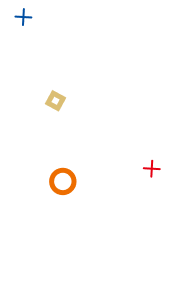
Source 1: Chu Lo, et al. (2021), p.337
Chu Lo, C. K. Y., Burton, S., Lam, R., & Nesbit, P. (2021). Which Bag? Predicting Consumer Preferences for a Luxury Product With a Discrete Choice Experiment. Australasian Marketing Journal, 29(4), 329–340. https://doi.org/10.1177/1839334921999506
Source 2: Ng (2017), p. 176
Ng, M. (2017). Luxury Brands and Social Media in China: New Trends and Development. In: Choi TM., Shen B. (eds) Luxury Fashion Retail Management. Springer Series in Fashion Business. Springer, Singapore.https://doi.org/10.1007/978-981-10-2976-9_10
Draft of student:
Though the majority preference for a conspicuous logo is consistent with long-standing discussion of conspicuous consumption, the data show that a very large minority of Chinese consumers appear to prefer a more subtle logo. A product range that incorporates both prominent and subtle logos is, therefore, most likely to match these varying consumer preferences. It is possible that the size of the segment preferring subtle logos will increase over time.
Explanation:
In this case, the writer copies almost word-for-word from another source. Even though the writer eliminates some sentences from the original, she or he still uses another person's words and ideas and tries to pass them off as his or her own. The writer does not use quotation marks and provides no citations to acknowledge that the material comes from another source.
Draft of student:
The prominence of a luxury brand is a significant concern for consumers. They would not buy some brands not recognized in their social circle. As a result, they prefer some products with conspicuous logo. However, the data also show that a very large minority of Chinese consumers appear to prefer a more subtle logo. A product range that incorporates both prominent and subtle logos is, therefore, most likely to match these varying consumer preferences.
Explanation:
Patchwork plagiarism occurs when a writer makes use of material taken almost word-for-word from several sources with no attempt to acknowledge the original sources. The writer may weave the source materials together with his or her own words into a paragraph that is a mixture of plagiarized and original material.
Chinese customers prefer reputable brands identified by their logos and trade-dress. Although the majority preference for a conspicuous logo is consistent with long-standing discussion of conspicuous consumption, the data show that a very large minority of Chinese consumers appear to prefer a more subtle logo (Chu Lo et al., 2021). Luxury brands may consider developing a new line of products with more subtle logos for Chinese customers.
Explanation:
In this example, the writer has acknowledged that she or he took words from a source document (Chu Lo et al., 2021). However, the writer did not put quotation marks around the words directly quoted from the source and failed to write down the page number of the source as required.
Chinese consumers will buy luxury goods to reflect their social status. Some people said “Chinese consumers buy luxury goods to define their social identity or show off wealth and power” and prefer products with good reputation and social values.
Explanation:
In this example, the writer has attempted to acknowledge that she or he took words from a source document by putting quotation marks around particular words within his or her own text. However, she or he has failed to identify the source with a citation.
When buying branded items, many Chinese customers prefer products with a conspicuous logo. However, there is a smaller but enlarging group of customers who prefer a more subtle logo. They want to use good quality luxurious items, but they do not want to be labeled as someone who wants to show off their wealth. Some major brands noted the development of this segment and planned to develop new product lines targeted at this group of customers.
Explanation:
This writer has adequately paraphrased the source material, but the draft is based almost completely on the ideas she or he discovered in the source. He or she has not acknowledged that the notion stated was derived wholly from another author's ideas, and this constitutes plagiarism.
According to Chu Lo et al. (2021, p. 337), “the prominence of a luxury brand is a significant concern for consumers. They would not buy some brands not recognized in their social circle”. However, there is some change in the market. Customers with preference “for more subtle logos” has only relatively recently been noted by western researchers (Chu Lo, et al., 2021).
Explanation:
It is considered over citation to repeat the same citation in every sentence when the source and topic have not changed or to cite several sources with similar ideas. If the submission contains a disproportionate quantity of cited material, such that the student has contributed very little original material to the submission, then the student’s mark should reflect that limited level of contribution.

